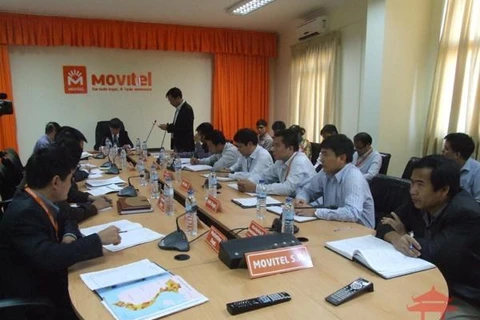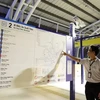 Customers at an outlet of Viettel mobile, an affiliate of Viettel Telecom, the leading telecom company in Vietnam. (Source: vietteltelecom.vn)
Customers at an outlet of Viettel mobile, an affiliate of Viettel Telecom, the leading telecom company in Vietnam. (Source: vietteltelecom.vn)Hanoi (VNA) – The effective implementation of the Laws on Telecommunications and Radio Frequencies, which took effect on July 1, 2010, unleashed the telecommunications market, according to Deputy Minister of Information and Communications Pham Hong Hai.
Hai said after the five-year implementation of the two laws, telecommunications and internet services have become basic and necessary amenities to all households.
The laws also helped reduce the gap in accessing telecommunications and internet services among regions and change the life of people and society, particularly people in remote areas, Hai said.
The huge investment in telecommunications infrastructure led to the rapid increase of mobile phone and broad-band internet subscribers.
The number of mobile subscribers increased from 45 million in 2009 to 120 million in 2015, in which 3G subscribers have numbered 40 million.
On marine navigation, many offshore ships have been equipped with communication devices. Many offshore fishing boats were installed with high-frequency communication devices. Around 60 percent of frequency bands of the country’s second satellite VINASAT-2 have been used.
The telecommunications sector’s combined revenue in 2015 reached 340 trillion VND (around 15 billion USD), generating a profit of 56 trillion VND and contributing 46.8 trillion VND to the State budget.
The two laws have also contributed to forming a healthy, competitive and transparent telecommunication market with all economic sectors allowed to join the market on an equal footing, as seen in the rapid increase in the number of telecommunications and internet enterprises.
The birth of the law on radio frequencies also enabled the effective management and allocation of telecommunications resources, especially radio frequency, meeting the demand of people and enterprises.
The Ministry of Information and Communications said it is working on more sub-law legal documents to complete the legal framework for the telecoms sector.-VNA























